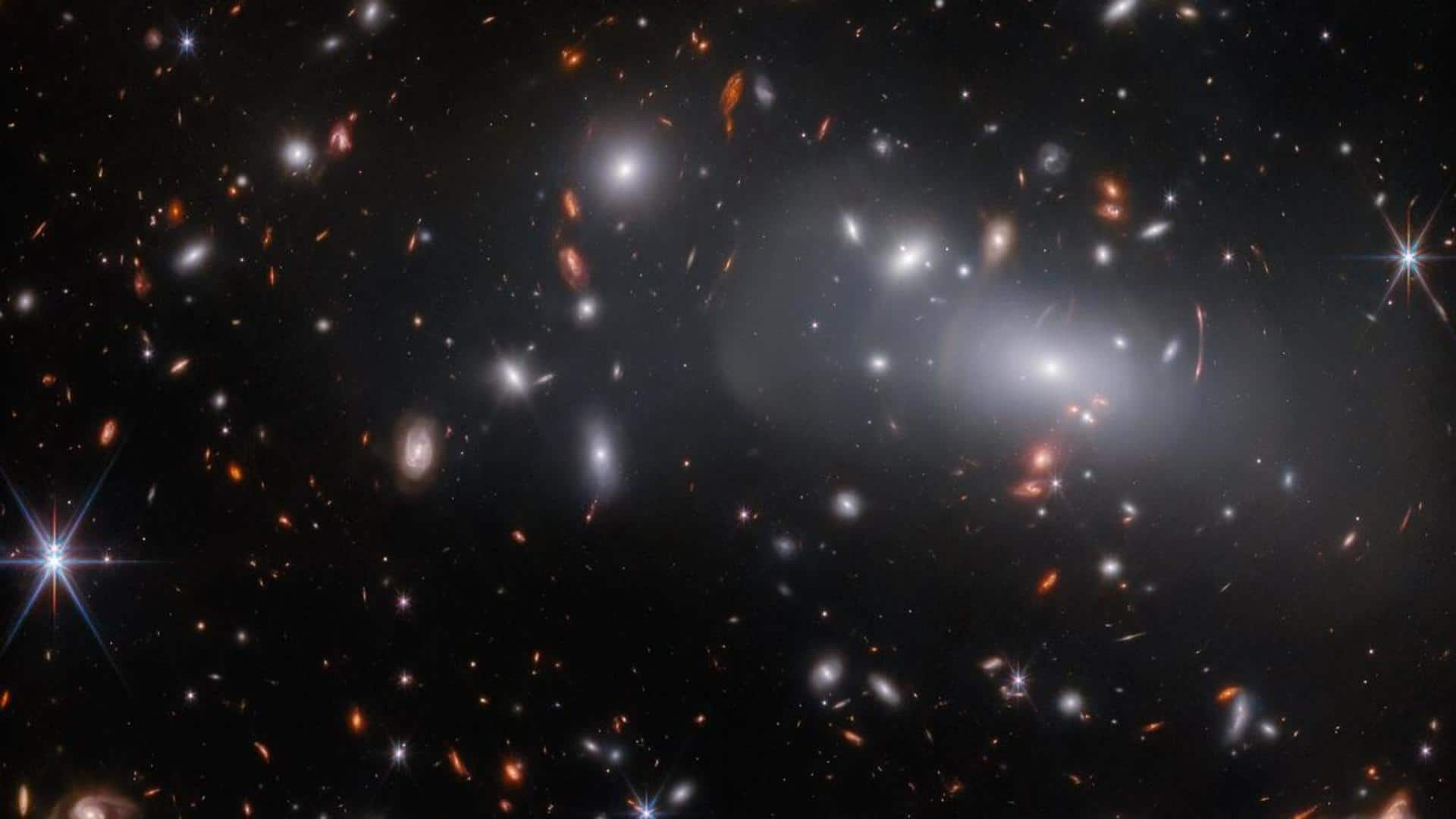
Glitch or mystery: JWST captures galaxy thrice in single image
What's the story
NASA's James Webb Space Telescope (JWST) makes exciting discoveries on a regular basis. Now, it has captured an image in which a galaxy within cluster RX J2129 appears thrice. This is not a glitch but in fact the result of a spatial phenomenon, in which time and space get warped. So, how does this thing work? Let us find out.
Context
Why does this story matter?
JSWT is the world's largest and most powerful space telescope built at a cost of $10 billion. Since its launch in December 2021, it has made observations about some of the most distant bodies in the universe. This latest image with triplets also broadens the horizons of our curiosity. Scientists are now hard at work to unlock the mysteries of the RX J2129.
Details
Brief info about galaxy cluster RX J2129
The RX J2129 is located in the Aquarius constellation, roughly 3.2 billion light-years from Earth. It contains a Type Ia supernova. The cluster is so massive and dense that it can warp time and space around it. It also multiplies, magnifies, and distorts galaxies behind it due to a phenomenon called gravitational lensing. Most stars and galaxies in this cluster have a reddish hue.
Definition
What is gravitational lensing?
Gravitational lensing takes place when massive celestial bodies cause a curvature of spacetime, which in turn bends the light traveling through or past it (just like vast lenses). The RX J2129 performs a similar function, as a result of which background objects appear strangely distorted when someone tries to capture an image. This explains why we are seeing triplets.
Process
How are Type Ia supernovae helpful?
Type Ia supernovae aid astronomers as they appear equally bright at the same distance. The farther they are from Earth, the dimmer they appear and they can be used as 'standard candles' to measure astronomical distances. By measuring luminosity of the Type Ia in RX J2129, scientists are trying to find the mass of the galaxy cluster and the 'prescription' of its gravitational lens.
Information
How was the image captured?
The picture of the galaxy cluster RX J2129 was captured using JWST's Near-InfraRed Camera. Meanwhile, the Near Infrared Spectrograph (NIRSpec) conducted spectroscopy of the Type 1a supernova. Scientists will now compare it to other Type Ia supernovae in the surrounding universe.